Support this podcast by visiting Jim’s Patreon Page
Tom Whipple is a former US Intel analyst who has put out the PeakOilNews for more than a decade. His newsletter is now associated with the PostCarbon institute and can be found at Peak-oil.org. Tom is not a tin-foil hat guy, but we get into a discussion in the heart of the interview about exotic alt. energy matters, including new developments in fusion and cold fusion. I disagree with Tom about the role that electric cars might play in the years ahead, but we didn’t have a debate about it per se during this chat, which i believe you’ll find very interesting.
Direct Download: http://traffic.libsyn.com/kunstlercast/KunstlerCast_301.mp3
New Paintings by JHK 2016 — 2017
Great Fall Reading… JHK’s new book!
“Simply the best novel about the 1960s.”
Read the first chapter here (click) on Patreon
Buy the book at Amazon or click on the cover below
or get autographed copies from Battenkill Books
Other Books by JHK
| The World Made By Hand Series: | |
Book 1: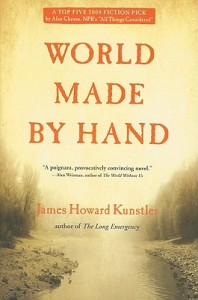 |
Book 2: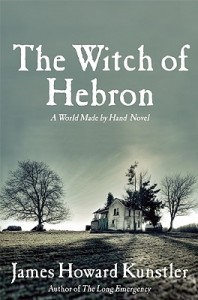 |
  |
  |
Book 3: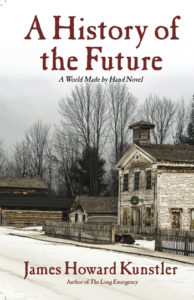 |
Book 4: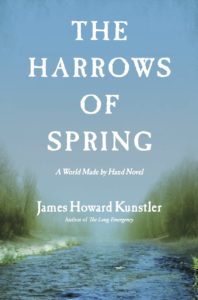 |
  |
  |
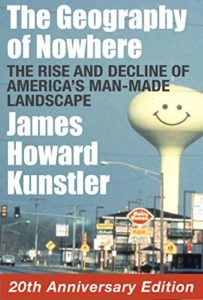 |
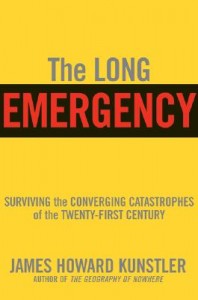 |
  |
  |
Support this blog by visiting Jim’s Patreon Page





 JHK’s Three-Act Play
JHK’s Three-Act Play



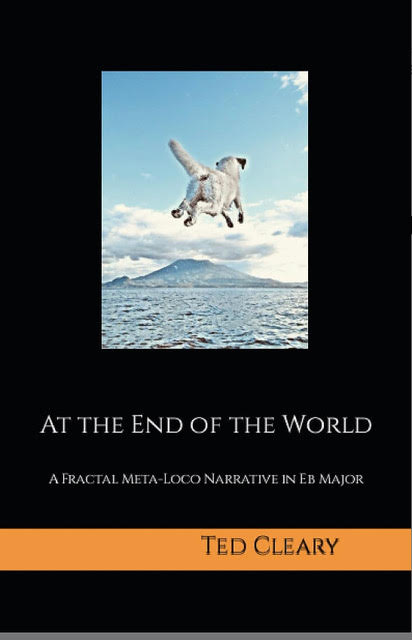




“One man’s magic is another man’s engineering. Supernatural is a null word.” -Robert Heinlein
This quote is especially poignant for me because it seems that too many Americans are uninterested in the hard sciences. They all love the magical devices that we build based on these sciences (cell phones) yet want no part in understanding it.
I have been extremely frustrated by our host Kunstler in the past by his dismissal of nuclear power/technology. I chuck it up to the willful ignorance of something that will destroy his world view that he has clutched onto for many years. I agree with most of his ideas, writings and political analysis. I however don’t share his chicken-little views on things about energy. We did not stop burning trees because we reached peak tree. We stopped burning them because we found something better to burn. I agree that peak oil exists. I differ from Jim Kunstler in the belief that we have other options for making energy that is both scale-able, cheaper, and better. Just as the coal industry killed the Integral Fast Reactor in the 1990’s by making a bastard coalition of people lead by John Kerry and GOP legislatures bought off by the coal industry, these newer and better energy sources will never see the light of day due to political problems.
Energy no matter the source is simply the process of changing a small amount of mass into a large amount of energy. Have you ever seen the equation E=m*c^2? If you pick up a rock and lift it over your head, you will have raised it’s mass slightly because it is now at a higher energy state in the gravity well of the earth. The energy that you used to lift the rock has made it slightly more massive. The total number of atoms in the rock has not changed, but they all now have a higher mass. The same is true for burning fossil fuels. When you burn a fossil fuel and rearrange the chemical bonds of the fuel and oxygen. This rearrangement of the electron bonds slightly changes the mass of the electrons forming those bonds and releases energy. This is not magic! This is basic science that should be taught in middle school.
A common 3,400 MW thermal nuclear reactor will consume about 3.28 grams of mass in 24 hours to make about 1200 MW-electric power. In the case of a fission reactor, you are adding a thermal neutron to the nucleus of a fissile isotope (Pu-239, U-235, U-233). When the thermal neutron enters the nucleus, it will lose a small amount of mass which is known as binding energy to the nucleus. This binding energy is enough to cause the fissile atom to fission and thus produce two or more fission fragments with a large amount of kinetic energy, some gamma radiation and more high energy neutrons. These neutrons can be used to keep the reaction going by designing a reactor with the correct geometry and materials. The shape is important to prvent excessive neutron leakage and the materials are important because you need to moderate the neutrons (slow them down). Think of it like you are building a large bonfire. You can’t just pile the wood up and expect it to burn well. You have to arrange it in a way to keep it burning by minimizing the heat loss while allowing enough air in to keep the fire burning.
I have to add that the binding energy given up by the neutron is what caused the fission to start and it is not the primary source of the fission energy. The actual fission event creates fission fragments that have a small amount of mass less than the original atom. This small mass loss is what gives these fission fragments such incredibly high kinetic energies. The total number of nucleons has not changed by the fission event, but their collective mass has changed a small amount. Remember that a small amount of mass equals a lot of energy.
Brilliant Power mentioned in this podcast caught my interest and I looked them up. I have not digested it all but it looks like they are using something called “muon catalyzed fusion”. Muons particles are fermions that obey the laws of quantum mechanics. Fermions (neutrons, protons, electrons, muons) cannot share quantum states. This means that only 1 fermion of a certain energy can occupy an orbital state. Each orbital energy has an up and a down state. This is why you can only put 2 electrons of the same energy into an energy orbital of an atom. They share the orbital because one can have an up spin and the other can have a down spin and thus not share quantum states (allowed). I will also add that the term “orbital” does not mean that it orbits a nucleus like a planet around a star. It is more like a wave function that travels around the nucleus of the atom and makes an electron cloud.
The muon is a special kind of fermion known as a lepton. Electrons and neutrinos are also leptons. The one big difference between a generation 1 lepton and a generation 1 quark is mass. The electron has a mass of .511 MeV where the proton has a mush larger mass of 938 MeV and the neutron has an even larger mass of 939.5 MeV.
Protons and neutrons are made of quarks. A proton has two up quarks and a down quark. Neutrons have two down quarks and an up quark. Quarks are also fermions that obey the laws of quantum mechanics.
The matter that we are most familiar with is made of these neutrons, protons and electrons and they are all Fermions. The neutrons and protons have a large mass and form a small and dense nucleus. The electrons however form a large less dense electron “cloud”. In reality, the nucleus is also a small dense “cloud” of particles. These “clouds” are simply a wave form of particles. The larger the mass or higher the energy, the smaller the wave form will be. The smaller nucleus waveform is surrounded by the much larger but less dense electron cloud waveform.
Remember how I stated that fermions can’t occupy the same quantum state? The same is true for neutrons and protons. They also form orbitals in the nucleus similar to what the electrons are doing. This is where the “magic” of muons come in. The muon is a particle with the same charge as the electron and can stand in for an electron. The muon however has a higher mass and thus a smaller wave form. This means that the muon “cloud” is a lot smaller than that of the electron “cloud”. You can pack many more of these muon hydrogen atoms in a given volume than that of regular hydrogen.
Deuterium is an isotope of hydrogen which is made of 1 proton and 1 neutron. Deuterium with sufficient kinetic energy can be fused with another hydrogen atom of deuterium atom. A very high temperature (aka high kinetic energy) is required to make this work. This is because the nuclei must have sufficient energy to overcome the repulsive coulomb force and get the nuclei close enough for the strong nuclear force to take over and pull them together to form a new nucleolus. This fusion of hydrogen nuclei causes a small decrease in the total mass of the protons and neutrons that form the new helium atom along with lots of energy.
Massive amounts of kinetic energy is required to make fusion work when using regular hydrogen and you can see it in action every day by observing the sun. If you were to somehow make a muon hydrogen by replacing the electrons with muons, you can get the nuclei to fuse at a much lower temperature (lower kinetic energy) because the muon clouds shield repulsive forces between the positive charges of the nuclei. If the nuclei get close enough together, the strong nuclear force takes over. This fusion can happen at much lower energies than the fusion reactions between regular hydrogen. This is the major reason why we have not figured out a way to peacefully use hydrogen fusion.
This special fusion using muon hydrogen is called muon catalyzed fusion and is not magic! It was discovered over 60 years ago in a lab. One problem with muons is that they have a short life. They can be made in the laboratory but they require lots of energy to make and live less than a second. Each muon made can only catalyze about 150 fusion reactions before it disappears. If we ever figure out a way to make large amounts of muons cheaply and easily, it would go a long way in making this muon catalyzed fusion process work.
We don’t have to get this fancy for addressing our energy needs. We have already demonstrated that thorium breeder reactors work with Shippingport. We have also demonstrated that molten salt reactor designs work and are much safer than today’s light water reactors. Why not combine them and design a molten salt breeder reactor? We have more thorium here on planet earth than we could ever hope to burn in a billion years. The current nuclear waste that we have sitting at the bottom of spent fuel pools and in dry cask storage would be more than enough to fuel the first reactors. You would then simply need to chemically remove the actual fission product waste and add in thorium as needed to breed in the new U-233 fuel.
These reactors are melt down proof because by design, they are already molten. The salt is made from a lithium fluoride salt with some other trace salts to form a eutectic mixture that melts at about 460 C. These high temperatures would allow us to use a high efficiency Brayton cycle gas turbine to make electricity. The waste heat could then be used to either run a steam turbine, or make industrial heat. This industrial heat could then be used to run a Fischer-Tropsch based chemical process to convert any carbon based organic material into an oil distillate. The Nazis used this process to turn coal into oil and fuel their machines of war. This is not some lab experiment that has never been performed on an industrial scale. It just consumes lots of heat. With a high temperature nuclear reactor, we would have plenty of waste heat to use in this chemical process.
These reactors are not a lab scale toy either. We ran them for many years at Oak Ridge where many crazy experiments were performed on them that would have lead to disasters at a light water reactor. They operate at atmospheric pressures and thus lack the pressures required to create a large exposure source term (radioactive plume during an accident). They also have a very large negative fuel temperature coefficient. This means as it gets hotter, the reactor will add negative reactivity which reduces the power output of the reactor. This means that the reactor is stable. The best part about this reactor design is that it creates lots of heat at a high temperature and we can breed more fuel in the reactor than it consumes. It is no less a renewable energy source than the sun.
Wow, lots to digest. Tom’s interview was interesting.
He learned about peak oil on the internet, became convinced it was real and problem, and he also has educated himself about these other potential energy sources like cold fusion or the “brilliant light” project on the internet.
This brings up a current hot topic of fake news or truthiness of information on the internet. Who does one properly interpret what they read on the internet as to its factual basis. Better how to appreciate its practical applicability and ultimate benefit or detriment if what is purposed is actually acted on.
I struggle with this problem every day. I work as a physician, and relatively well steeped in the facts regarding my specialty of neurology. But if I search for some fact that I know to be true using one of the typical search engines, I’m often frustrated in my efforts to get a truthful/factual response by all the ridiculous nonsense that the search engine prioritizes merely by its popularity.
So when I type in Brilliant light power into the browser there are pages and pages of “supportive” websites. But interestingly it takes considerable and deliberate effort to get past these sites to ones where there is a rational, critical, and knowledgeable discussions of the scientific evidence for it, the ability to practically apply it and the ultimate consequences of using it. The same applies to nuclear power and all its iterations.
The famed ecologist Garret Hardin covered this topics decades ago in his Book, “Filters Against Folly, How to Survive despite Economists, Ecologists, and the Merely Eloquent” and we’d be well advised to take his advice. I fear that the internet prays on our literacy at the expense of our ability to understand the math or systemic thinking required to interpret the truthiness of statements and proclamations.
“Professor Hardin identifies three major filters against folly that we citizens can use against the blindness, short sightedness, and sheer idiocy that so often comes disguised as eloquence or expertise.
The first filter is literacy – “the ability to understand what words really mean.” The second is numeracy – “the ability not only to quantify information, but also to interpret it intelligently.” Hardin calls the last filter ecolacy – the ability to take into account the effects of complex interactions of systems over time.”
Good podcast, interesting discussion and thoughful comments. This seems a much more productive place for discussion than the Monday/Friday blog, where comments are, well, let’s just say less thoughtful, meaningul and considerate.
Nuttyneutron, I also like Mr. Kunsler’s fiction and political analysis, but have been less fond of his dire future and predictions. I though perhaps they were just a literary device, but that doesn’t seem to be so. I do admire his willingness to host podcasts with those who disagree with him; that’s all too rare these days. And if he’s listening, I’d love some more fiction books.
Rbeck999, I’ve seen the same thing. I always look at the source. Sometimes it’s just best to go right to the second or third Google page. I also like to start with Wikipedia, if it has an article on the subject. I find Wikipedia extremely reliable. If there are any issues, you can edit them, and your edits will get an immediate and sensible response. I’m sure they exist, but I have yet to find any serious problems with Wikipedia articles.
Of course we all know that there is a theoritical peak oil point; the quantity of oil is finite, and if we keep removing it, at some point we will reach that point. It also appears nobody really knows when that point will come. Thankfully, it appears even more likely that it will never matter. I suspect we will reach peak oil demand before we encounter any peak oil problems. We will transition to various other fuels fast enough that we never come close to depleting all the petroleum. We will be using petroleum for a long time, but using less and less of it because we need less and less of it. That’s a good thing.
I work for a company that makes battery separator material and the machinery that makes it. Batteries are needed for electric cars, but the process of making batteries, believe me, is highly dependent on oil. In fact , the battery separators are made by extruding sheets of oil impregnated with silicon. The material is sent through a long process of oil extraction with a solvent, which leaves the silicon membrane intact. Giant ovens cure the sheets.The whole process takes a huge amount of energy and pollution. Electric cars are definitely not a solution to our problem.
Oil is great stuff, and we will always use it. But as we develop more and better alternatives, there will be plenty of oil left for the things we really need it for. Like making electric car batteries.
pathological science ….
“…. a psychological process in which scientists unconsciously veer away from the scientific method and become so engrossed in what they are doing they develop an inability to be objective and see what is real and not real. Pathological science is “the science of things that aren’t so”